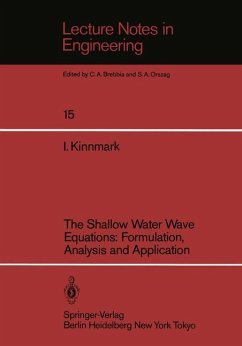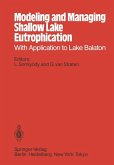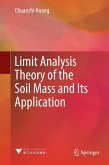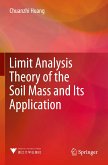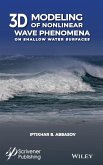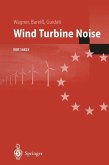1. 1 AREAS OF APPLICATION FOR THE SHALLOW WATER EQUATIONS The shallow water equations describe conservation of mass and mo mentum in a fluid. They may be expressed in the primitive equation form Continuity Equation _ a, + V. (Hv) = 0 L(l;,v;h) at (1. 1) Non-Conservative Momentum Equations a M("vjt,f,g,h,A) = at(v) + (v. V)v + tv - fkxv + gV, - AIH = 0 (1. 2) 2 where is elevation above a datum (L) ~ h is bathymetry (L) H = h + C is total fluid depth (L) v is vertically averaged fluid velocity in eastward direction (x) and northward direction (y) (LIT) t is the non-linear friction coefficient (liT) f is the Coriolis parameter (liT) is acceleration due to gravity (L/T2) g A is atmospheric (wind) forcing in eastward direction (x) and northward direction (y) (L2/T2) v is the gradient operator (IlL) k is a unit vector in the vertical direction (1) x is positive eastward (L) is positive northward (L) Y t is time (T) These Non-Conservative Momentum Equations may be compared to the Conservative Momentum Equations (2. 4). The latter originate directly from a vertical integration of a momentum balance over a fluid ele ment. The former are obtained indirectly, through subtraction of the continuity equation from the latter. Equations (1. 1) and (1. 2) are valid under the following assumptions: 1. The fluid is well-mixed vertically with a hydrostatic pressure gradient. 2. The density of the fluid is constant.
Hinweis: Dieser Artikel kann nur an eine deutsche Lieferadresse ausgeliefert werden.
Hinweis: Dieser Artikel kann nur an eine deutsche Lieferadresse ausgeliefert werden.

